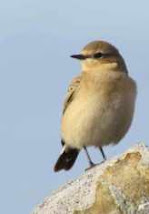A new report by Scottish Natural Heritage (SNH) reveals that Scotland’s seabird numbers appear to be levelling off, after a steady period of decline since 2000.
Between 1986 and 2009, the number of seabirds in Scotland has fluctuated, but declined overall by 28 percent. Now, a recent study confirms that overall numbers may have stabilised since 2007.
The decrease was likely due to food shortages, weather conditions and predation by non-native species such as brown rats and mink. A likely major cause was a drop in the number of small fish, such as sandeels, which are an important food source for many seabirds. These fish are probably being affected by rising sea temperatures because of climate change, as well as other factors.
A range of measures has been put in place to help combat pressures on the seabirds. Voluntary reduction in sandeel fisheries means that very little if any sandeel fishing now takes place within foraging range of kittiwakes, a species which, in recent years, has seen a particularly sharp drop in numbers. Intensive trapping and removal of non-native predators, such as the brown rat and the American mink, has also been carried out on various parts of the Scottish coastline and islands and is now starting to show some benefits, with terns recolonising some areas.
The Scottish Government’s recent Marine Bill also includes measures to improve marine nature conservation to safeguard and protect Scotland’s unique habitats.
Andy Douse, SNH ornithologist, said: “The apparent halt of the decline since 2007 is encouraging. This may be an early sign that the various measures, and a lot of effort from many different people and groups across Scotland, have made a difference to seabird populations which are possibly beginning to stabilise. However, it is too early to say for sure that seabird numbers have stopped declining. Some sites in Scotland, particularly in the Northern Isles and some east coast colonies, have continued to decline. The data from the next few years will help us to better understand the changes.
“Thanks to the huge effort from volunteers and professionals, we are now able to monitor seabird numbers much more effectively than in the past, and respond quickly when action is needed.”
Scotland’s seabirds are internationally important with around four million breeding seabirds of 24 species. The recent drop in numbers follows two decades of occasional years of poor breeding – but poor years have happened more often and with more severity since 2000.
Subscribe to:
Post Comments (Atom)












No comments:
Post a Comment